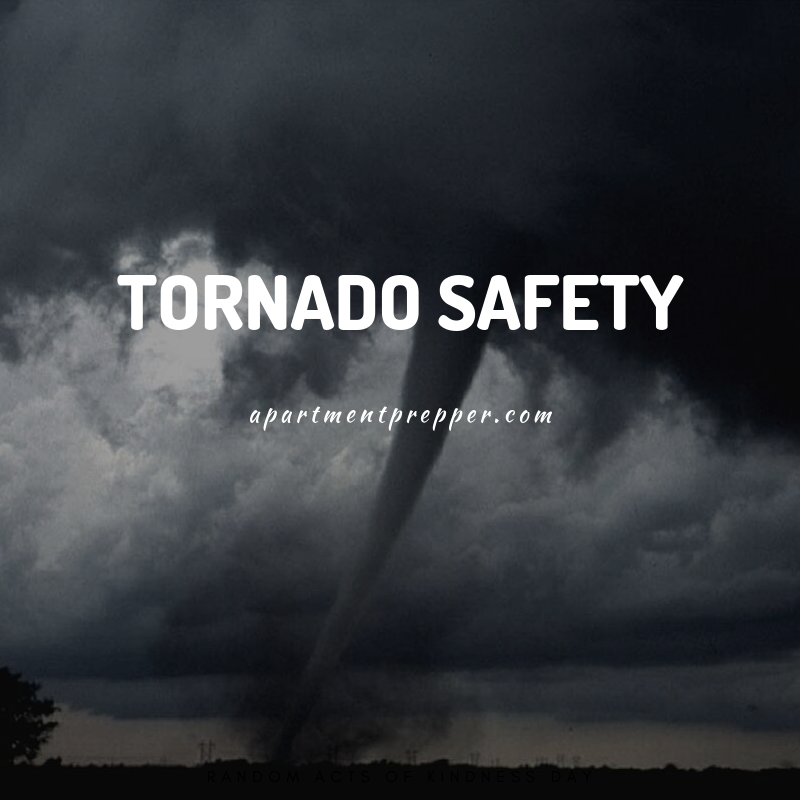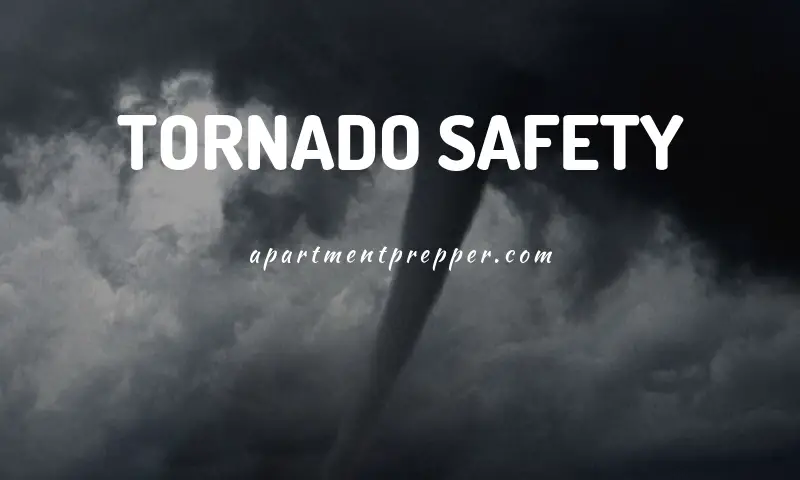This post is by Bernie Carr, apartmentprepper.com
While living in Houston, we occasionally had tornado warnings as severe storms spawn tornadoes. Thank God a tornado has never touched down in our immediate area but we were always on the alert for them.
Tornado watch versus tornado warning
The National Weather Service typically issues either a tornado watch or warning. Knowing the difference can be a life saver.
Tornado watch means a possibility exists that a tornado can happen.
Tornado warning means an actual tornado has been detected in the area, therefore a tornado warning is more severe than a tornado watch.
What are the signs to watch for?
According to the National Oceanic and Atmospheric Administration, take note of the following signs:
- Watch for strong, persistent rotation in the lower part of the cloud (cloud base).
- Whirling debris or dust on the ground under a cloud base — not all tornadoes will have a funnel.
- Hail or heavy rain followed by either dead calm or a fast, intense wind shift. Many tornadoes are wrapped in heavy precipitation and can’t be seen.
- Day or night – Loud, continuous roar or rumble, which doesn’t fade in a few seconds like thunder.
- At night, watch for small, bright, blue-green to white flashes at ground level near a thunderstorm (as opposed to silvery lightning up in the clouds). These mean power lines are being snapped by very strong winds, maybe a tornado.
- In the night sky, look for constant lowering from the cloud base, silhouetted or lit up by lightning — especially if it is on the ground. You may see a blue-green-white power flash underneath.
The average amount of lead time for a tornado is only 13 minutes, so you need to plan ahead. My friend who has been in a tornado describes the sound as similar to a freight rain – it is a continuous rumble and sounds different from a normal thunderstorm sounds.
Make a plan
Prepare an emergency kit
The following are the minimum items you should have in your emergency kit:
Water – One gallon of water per person for at least three days. You should also have a water purifier.
Food – for each member of the family, you at least a three day supply of Non-perishable food* Include a can opener if you have canned goods.
*Don’t forget to include pet food in your kit if you have pets.
Flashlight (with extra batteries)
Clothing – One of change of clothing (including footwear) per person
Whistle to signal for help
Sanitation supplies: toilet paper, antibacterial wipes, garbage bags and ties
Dust mask
Plastic sheeting and duct tape to shelter-in-place
Wrench or pliers to turn off utilities
For more details, visit FEMA for a checklist of supplies.
Designate a tornado room
If you live in an apartment, you can’t modify the building’s structure to make a tornado shelter.
1. Find out if there are any tornado shelters nearby.
2. Designate a safe room within your home.
Keep the following in mind when choosing the room you will run to if a tornado hits:
- Avoid windows.
- Go to the lowest floor, small center room (like a bathroom or closet)
- Under a stairwell, or in an interior hallway with no windows.
- A bath tub may offer a bit of partial protection.
- It’s a good idea to have some helmets in the room that everyone can put on to avoid head injury according to NOAA.
3. Your emergency kit including the weather radio should be located inside your designated room.
What do you do if a tornado hits?
Your entire family needs to know where to go if a tornado hits. If you are at home, gather everyone in the designated room.
The following tips may help:
- Get down close to the floor. Crouch as low as possible, with your face down
- Cover your head with your hands.
- Even if you are in an interior room, cover yourself with some sort of thick padding (a mattress, blankets, etc.), to protect against debris in case the room or walls cave in.
- Put on a helmet to protect your head.
- Listen to local news updates. Wait until the tornado has passed the area before venturing out.
What if you are at work?
Some buildings I have worked in have a designated tornado shelter – know exactly where it is located. If your office building does not have one, head to an enclosed area with no windows in the center of the building. Make sure you stay away from glass and go to the lowest floor possible. Interior stairwells are also good as they will allow you to get down to a lower floor quickly. Avoid using the elevator as you may get trapped if power goes out.
After the tornado
Watch out for debris as you venture out of your shelter.
Note any damage around you and be aware of gas leaks-do not light matches or lighters. Stay away from power lines and puddles with live wires in them; they can get you electrocuted.
Make sure you have sturdy shoes on and avoid broken glass, nails, and other sharp objects.
Stay out of any heavily damaged houses or buildings; they could collapse at any time.
Keep listening for information and instructions from emergency officials.
When it’s safe to do so, take photos of any damage to your home or belongings in case you need to file an insurance claim.
Have you survived a tornado? What was it like? Please share in the comments!



Thanks, we live in Missouri, so this is very useful information!
Hi Cia, Glad you found the article helpful. Stay safe and thanks for the comment!